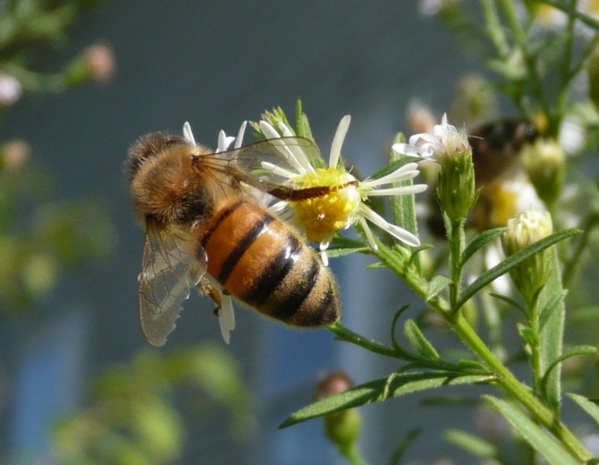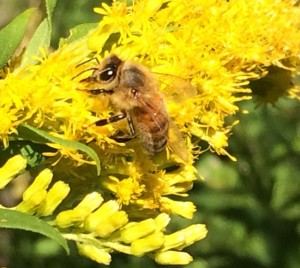Live From the Hive: November 2014

“Honey, the Magical Food” by Annie Watson, Thistle Hill Studio
Imagine a food which has an incomparable rich sweet flavor, never spoils, and contains proteins, vitamins, minerals, and antioxidants. That’s honey.
Honey is truly a magical substance. For thousands of years it was the only sweetener known to man. It’s mentioned in many ancient texts, from the Bible, to the Quran, to Hindu scriptures. It’s deeply embedded in the folklore of many cultures. Zeus, king of the Greek gods, was raised on honey. It stays fresh, too: thousands-of-years-old honey was found in Egyptian tombs, ready to eat.
Raw honey offers us amino acids, enzymes, vitamins B and C, a bouquet of nourishing minerals, and antioxidants. Its simple sugars, glucose and fructose, are more easily digested, and its glycemic index lower, than cane sugar. Honey has amazing healing properties. In the case of burns, honey heals faster and more completely than silver sulfadiazine, the standard treatment. And did you know that bacteria cannot live in honey?
The best thing about honey is that it tastes good. Depending on what flowers the bees have foraged on, different honeys treat us to subtle yet distinctive changes in flavor; but all are sweet and delicious! Raw honey has better flavor and a higher nutritional value than honey that’s been heated to keep it liquid. Heating honey causes the loss of hundreds of beneficial components.
The honey that goes into Caledonia Spirits Barr Hill gin is 100% raw. Fresh honey direct from the hive is truly “food for the gods”, and we are blessed to be able to partake.

